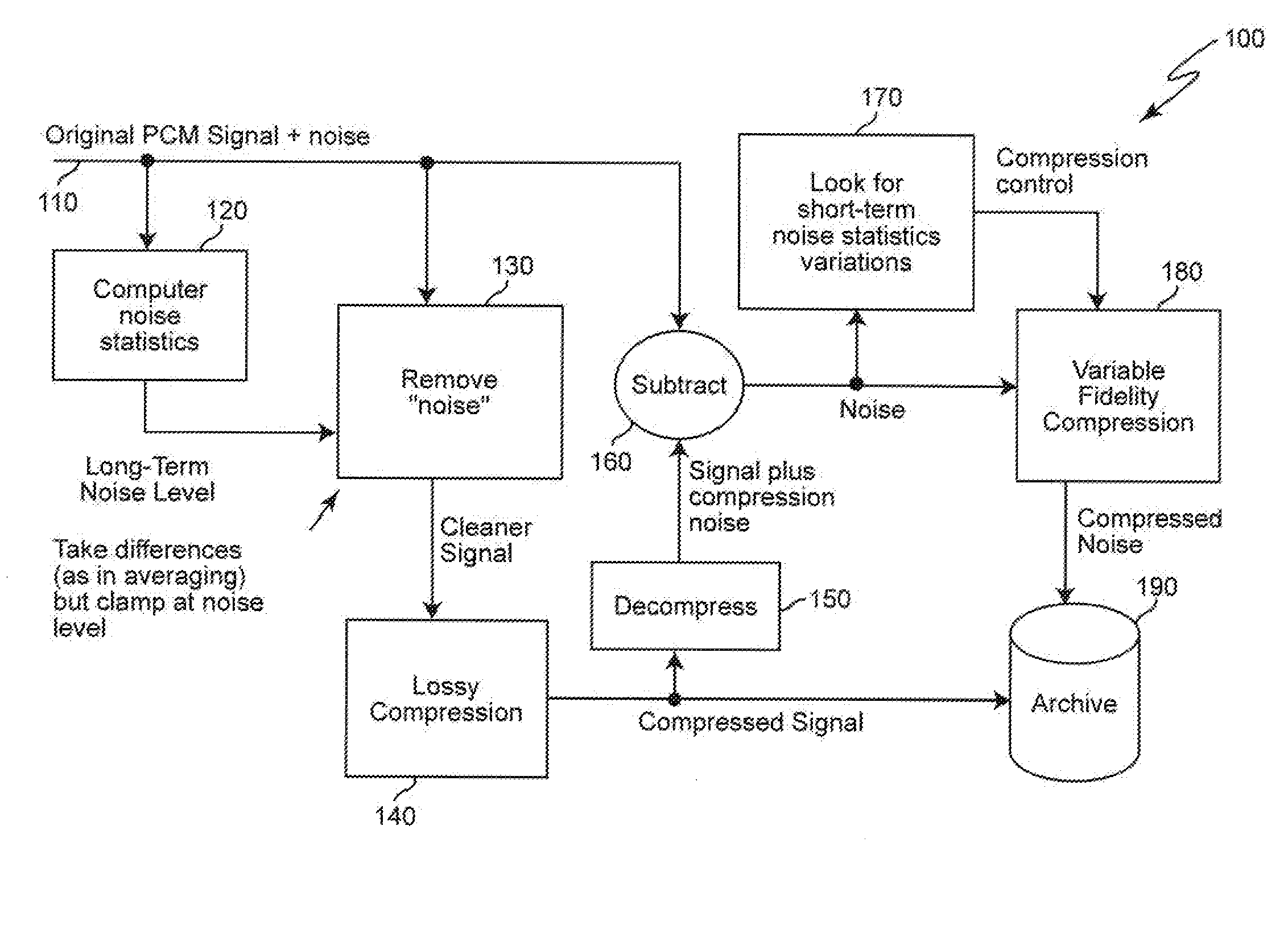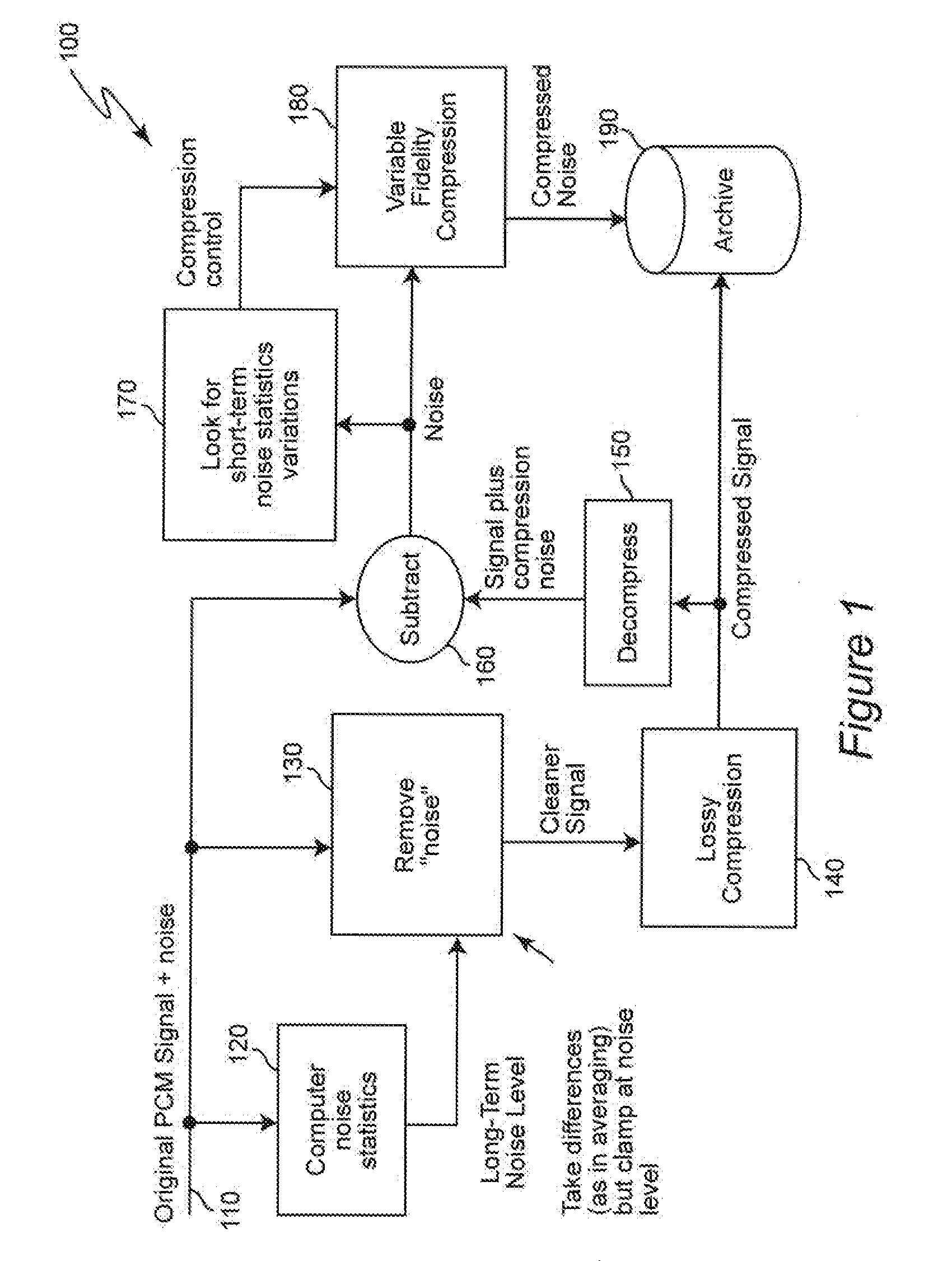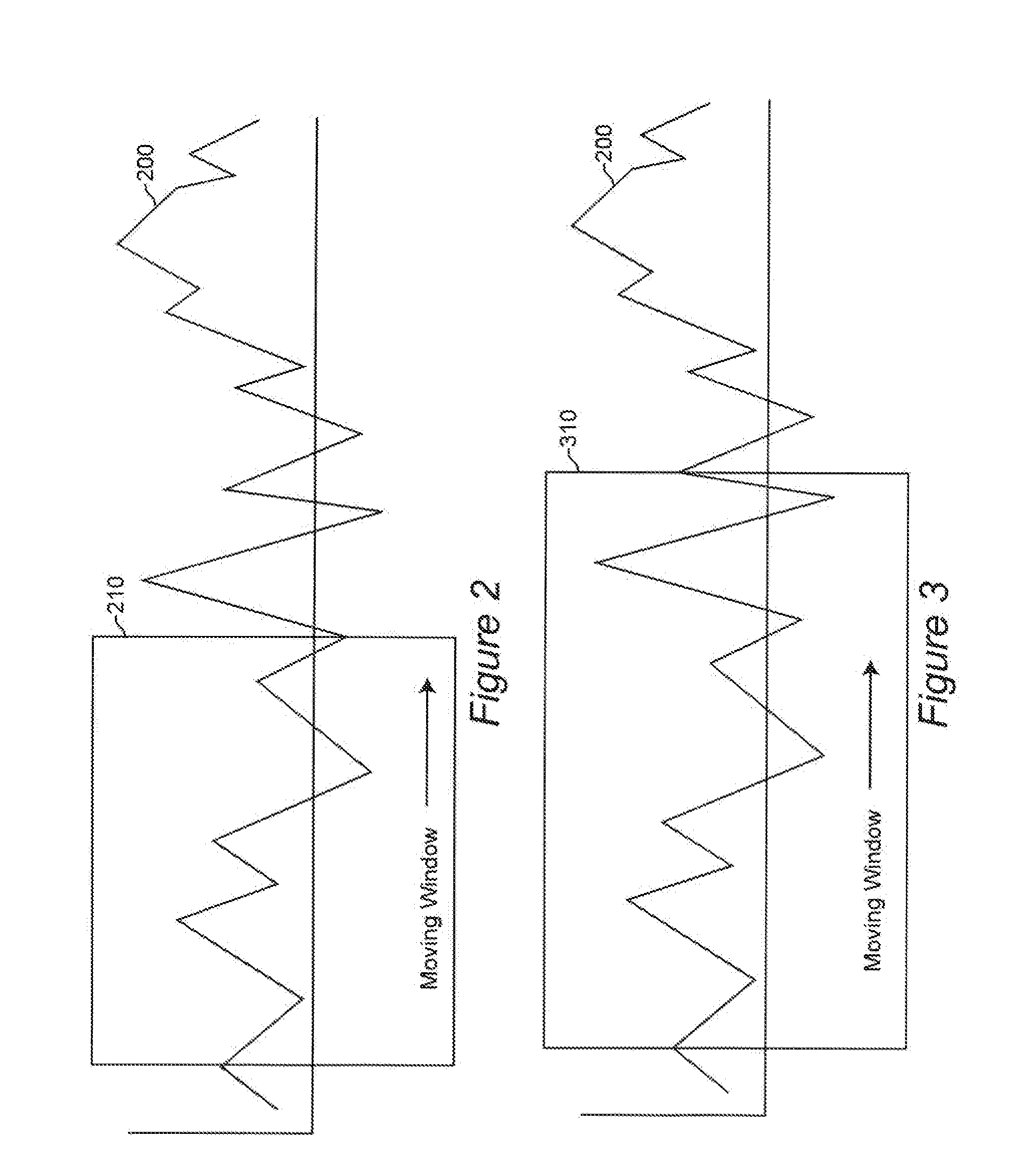Using Statistics to Locate Signals in Noise
a technology of statistics and noise, applied in the field of data signal detection, compression and storage, can solve the problems of affecting any compression algorithm which may be applied, high noise levels are unavoidable and may substantially exceed, and require specialized and computationally intensive processing, so as to minimize the required storage and preserve the fidelity of portions
- Summary
- Abstract
- Description
- Claims
- Application Information
AI Technical Summary
Benefits of technology
Problems solved by technology
Method used
Image
Examples
Embodiment Construction
[0024]Referring now to the drawings, and more particularly to FIG. 1, there is shown a schematic representation of the architecture of a preferred embodiment 100 of the invention which can also be understood as a high level data flow diagram, as well. It should be understood that some elements or processes depicted are known, as will be identified below, while others are unique to the present invention as is the organization and interaction of the depicted elements. Therefore no portion of FIG. 1 is admitted to be prior art in regard to the present invention other than as may be indicated below that certain known processes are considered suitable for use as specific, individual depicted elements or processes.
[0025]It should be kept in mind during the following discussion that the invention is principally directed to screening of a signal for the presence of data signals, some of which may be relatively small and which approximate or are below the amplitude of noise in the signal and...
PUM
 Login to View More
Login to View More Abstract
Description
Claims
Application Information
 Login to View More
Login to View More - R&D
- Intellectual Property
- Life Sciences
- Materials
- Tech Scout
- Unparalleled Data Quality
- Higher Quality Content
- 60% Fewer Hallucinations
Browse by: Latest US Patents, China's latest patents, Technical Efficacy Thesaurus, Application Domain, Technology Topic, Popular Technical Reports.
© 2025 PatSnap. All rights reserved.Legal|Privacy policy|Modern Slavery Act Transparency Statement|Sitemap|About US| Contact US: help@patsnap.com



